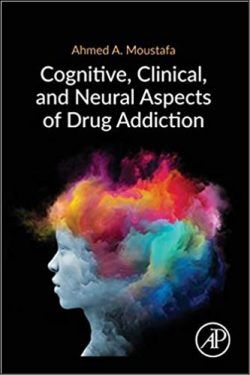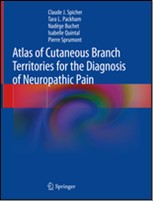This book traces the history of adenosine receptor research from molecular biology to medicinal chemistry to behavior, including their implications in disease and potential strategies as therapeutic targets. It provides the reader with a comprehensive overview of the adenosine receptors that includes information on all subtypes – A1, A2A, A2B and A3. Aspects addressed include the most up to date information on their functional distribution in the nervous and peripheral systems, behavioral roles in inflammation, cancer, pain and neurological diseases such as Huntington’s disease, Epilepsy, Parkinson’s disease and Alzheimer’s disease.
Preface (The Editors)
Historical Overview (Burnstock G.1, & Abbracchio MP.2; 1University College Medical School, London, UK; 2 University of Milan, Italy)
Molecular Structure, Distribution and Signal Transduction (Linden J.; Division of Developmental Immunology, La Jolla Institute for Allergy and Immunology, La Jolla, CA, USA)
Thermodynamic Analysis of ARs (Borea PA. & Vincenzi F.; Department of Medical Sciences, University of Ferrara, Italy)
Medicinal Chemistry of A1 ARs (Scammels PJ., Medicinal Chemistry & Drug Action, Monash Institute of Pharmaceutical Sciences, Monash University, Australia)
Medicinal Chemistry of A2A ARs (Baraldi PG.1 & Jacobson KA.2; 1 Department of Pharmaceutical Sciences, University of Ferrara, Italy; 2 National Institute of Diabetes and Digestive and Kidney Disease, National Institutes of Health, Bethesda, MA, USA)
Medicinal Chemistry of A2B ARs (Muller C., Pharma Center Bonn, Pharmaceutical Institute, University of Bonn, Germany)
Medicinal Chemistry of A3 ARs (Jacobson KA.1 & Baraldi PG.2; 1 National Institute of Diabetes and Digestive and Kidney Disease, National Institutes of Health, Bethesda, MA, USA; 2 Department of Pharmaceutical Sciences, University of Ferrara, Italy)
Adenosine Receptors in Neuroinflammation (Borea PA., Gessi S., Merighi S.; Department of Medical Sciences, University of Ferrara, Italy)
Parkinson’s disease (Franco R., University of Barcelona, Barcelona, Spain)
Alzheimer’s disease (Cunha RA., University of Coimbra, Coimbra, Portugal)
Huntington’s disease (Cattaneo E., Department of BioSciences and Centre for Stem Cell Research, University of Milan, Italy)
Amyotrophic Lateral Sclerosis (Popoli P., Department of Therapeutic Research and Medicines Evaluation, Istituto Superiore di Sanità, Rome, Italy).
Neuropsychiatric Disorders (Chen JF., Department of Neurology, Boston University School of Medicine, Boston, MA, USA)
Epilepsy (Ribeiro JA. & Sebastiao AM., Institute of Pharmacology and Neurosciences, Faculty of Medicine, and Unit of Neurosciences, Institute of Molecular Medicine, University of Lisbon, Lisbon, Portugal)
Cerebral Ischemia (Pedata F., Department of Neuroscience, Psychology, Drug Research and Child Health, University of Florence, Italy)
Pain (Salvemini D., Department of Pharmacology and Physiology, Saint Louis Universit
y School of Medicine , Missouri, USA)
Cardiovascular System (Schrader J., Department of Molecular Cardiology, Heinrich Heine University Düsseldorf, Germany)
Pulmonary System (Barnes PJ., Department of Thoracic Medicine, National Heart and Lung Institute, Imperial College, London)
Renal System (Schnermann J., National Institute of Diabetes and Digestive and Kidney Diseases, National Institutes of Health, Bethesda, MA, USA)
Immune & Inflammatory System (Cronstein BN., New York University School of Medicine, NY – USA;
Obesity (Dhalla AK., Gilead Sciences Incorporated, Fremont, CA, USA)
Cancer (Fishman P., Can Fite Biopharma, Israel)
Adenosine and Pulsed Electromagnetic Fields (Borea PA. & Varani K., Department of Medical Sciences, University of Ferrara, Italy)
Current and Future Trends in Drug Discovery (Fredholm B.B., Department of Physiology and Pharmacology, Karolinska Institutet, Sweden)
Pier Andrea Borea received his degree in Chemistry Summa cum Laude from the University of Ferrara in 1967. He moved as Visiting Professor to Preclinical Research Department, Sandoz, Basel (CH) and to Medical Research Council Molecular Neurobiology Unit, Cambridge (UK). At present he is Honorary Professor of Pharmacology and member of the Board of Directors at the University of Ferrara. He is member of the Italian Society of Pharmacology and Purine Club. He has published 400 publications in international journals and contributed about 20 chapters to International Books. He has participated in more than 200 congresses, presenting main, oral and poster communications. He is also named as inventor in about 20 Patents. He has been invited to give about 50 Plenary Lectures at International Symposia and at several Universities. His main field of interest is represented by the study, at the molecular level, of drug-receptor interactions and in particular of the P1 adenosine receptor system.
Katia Varani received her degree in Biology in 1988 and her Ph.D. in Cellular and Molecular Pharmacology in 1995 from the University of Ferrara. She is currently Associate Professor of Pharmacology at the Medical Sciences Department of the University of Ferrara. Her research activity mainly involve pharmacological, biochemical and molecular characterization of adenosine receptors in human neurodegenerative diseases, chronic and neuropathic pain, inflammatory diseases and cancer. She has published 250 publications on peer-reviewed international scientific journals, 15 book chapters and several communications in international and national congresses. She is member of the Italian Society of Pharmacology and Purine Club.
Stefania Gessi received her degree in Biology Summa cum Laude from University of Ferrara in 1994 and her Ph.D. in Cellular and Molecular Pharmacology in 2000 under the guidance of Professor Pier Andrea Borea. She moved at Centro Ricerche Schering-Plough, Parco Scientifico San Raffaele (Milano) and at the Department of Physiology and Pharmacology, section of Molecular Neuropharmacology, Karolinska Institutet (Stockholm). She is currently Associate Professor of Pharmacology in the Medical Sciences Department of the University of Ferrara. Her research activity focused mainly on the pharmacological, biochemical and molecular study of adenosine receptors in inflammation and cancer and is documented by more than 130 publications on peer-reviewed international scientific journals, 18 book chapters and several communications in international and national congresses. She is member of the Italian Society of Pharmacology and Purine Club.
Stefania Merighi received her degree in Biology Summa cum Laude at the University of Ferrara (Italy) in 1997 and obtained her Ph.D. in Cellular and Molecular Pharmacology at the same University in 2003. Currently, she is Associate Professor of Pharmacology at the University of Ferrara, a position she has held since 2017. Her research activities primarily focus on the pharmacological, biochemical and molecular study of GPCRs in oncology and neuroinflammation and has published extensively in this area. Her research activity is documented by more than 100 publications on peer-reviewed International scientific journals and several communications in International and National congresses. She is member of the Italian Society of Pharmacology and Purine Club.
Fabrizio Vincenzi received his degree in Biology from University of Ferrara in 2004 and obtained his Ph.D. in Cellular and Molecular Pharmacology in 2008 at the section of Pharmacology of the University of Ferrara. His main research field is represented by the study of the drug-receptor interaction with specific interest in the thermodynamic and kinetic aspect of the ligand-receptor binding. He primarily focused his research on the study of G-protein coupled receptors and in particular on adenosine receptors and their involvement in neurodegenerative diseases, pain, chronic inflammatory diseases, anxiety and cancer. He has published 80 scientific papers in peer-reviewed international journals and is member of the Italian Society of Pharmacology and Purine Club.
This book traces the history of adenosine receptor research from molecular biology to medicinal chemistry to behavior, including their implications in disease and potential strategies as therapeutic targets. It provides the reader with a comprehensive overview of the adenosine receptors that includes information on all subtypes – A1, A2A, A2B and A3. Aspects addressed include the most up to date information on their functional distribution in the nervous and peripheral systems, behavioral roles in inflammation, cancer, pain and neurological diseases such as Huntington’s disease, Epilepsy, Parkinson’s disease and Alzheimer’s disease.
Provides detailed overview of all adenosine receptor types





